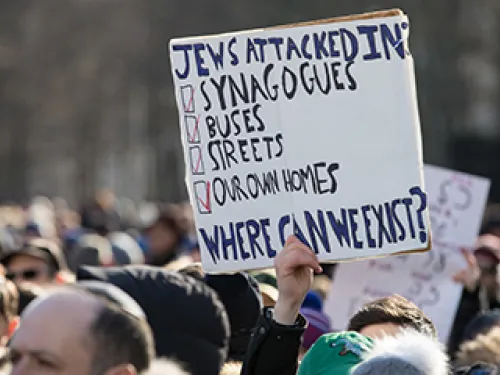Related Content
The security barrier (or fence) is a defensive measure first approved by the Israeli government in 2002 to prevent Palestinian terrorists from reaching their civilian targets inside Israel.
The decision to build the barrier was reached following more than two years of relentless terrorism by Palestinians suicide bombers who targeted Israeli buses, cafes, shopping centers and other civilian gathering points during the Second Intifada which killed over 1,000 Israelis and left thousands severely injured. Israel felt it had no choice but to take strong action to stop these terrorists from entering Israel from their operation centers in the West Bank.
The approximately 450-mile security barrier (not yet completed) is comprised 90% of chain-link fence and 10% of a concrete barrier. The entire barrier is a multi-fence system which incorporates ditches, barbed wire, patrol roads and observation systems. Contrary to anti-Israel propaganda, a very small section of the barrier is concrete, or can be described as “a wall.” The concrete sections are primarily in the area of the Palestinian cities of Qualqilya and Tulkarim, the locus of many terrorist operations, areas where there is a history of snipers shooting at Israeli civilians, and along the outskirts of municipal Jerusalem.
The security fence has significantly reduced terrorist attacks in Israel. According to the Israeli government, since it has been operational, there has been a dramatic decrease in Palestinian terrorism – not because there have been no attempted attacks, but because the security barrier has impeded terrorists from reaching Israeli cities, or has forced them to take more circuitous routes, leading to their capture.
The fence has caused hardship for a number of Palestinians located on or near its route; however, Israel has made alterations to the initially planned route to ensure it affects a minimal number of people, given the population density and demographic complications that define the area. The Israeli Supreme Court has issued rulings on the barrier’s route, ordering it changed in areas where it would lead to unnecessary hardship for Palestinians.









